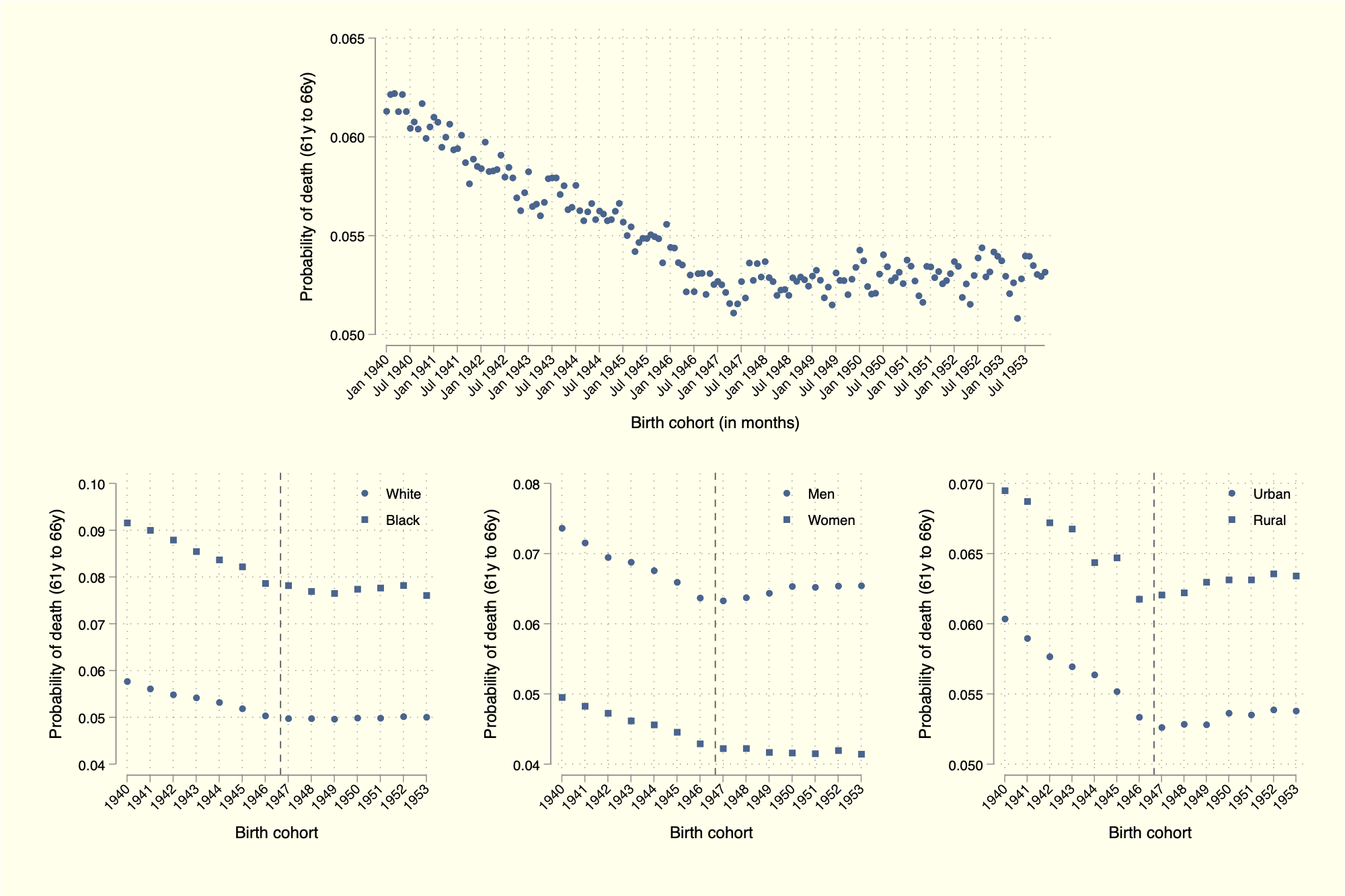Above: We first plot mortality rates for Americans nearing retirement ages by their month of birth, highlighting the sharpness of their departure from the trend set by cohorts born prior to and just after World War II. We show additionally how pervasive that departure is: We see it (i) among Black Americans just as we see it among White Americans; (ii) for both men and women; and (iii) in dense urban areas as well as rural parts of the country.
Working paper coming soon
Abstract
Evidence has been mounting for decades that Americans born in the middle of the 20th Century have not sustained the tremendous progress in many critical socioeconomic markers witnessed in previous generations. What began as reversals in high school completion rates in the 1960s and increases in unemployment rates in the 1970s and 1980s eventually showed up as elevated mortality rates by the end of the century, which is now recognized as the country’s most pressing health challenge. We document several features of this “cohort malaise,” which we characterize as the stagnation in adult mortality rates for cohorts born in the wake of World War II. We show that progress in adult mortality stops abruptly with Americans born in the summer of 1947. We then look for differential severity by race, sex, geography, and other factors that might reveal roots of the malaise. What we find instead is remarkable pervasiveness, with the cohort break in mortality appearing for all these demographic groups. Our conclusion is that successful theories of the malaise, now responsible for over a million excess deaths relative to trend, will have a distinctive signature: sudden cohort-by-cohort changes around the summer of 1947 that span race, sex, and geography.
Disclaimer: Any views expressed are those of the authors and not those of the U.S. Census Bureau. The Census Bureau has reviewed this data product to ensure appropriate access, use, and disclosure avoidance protection of the confidential source data used to produce this product. This research was performed at a Federal Statistical Research Data Center under FSRDC Project Number 2603. (CBDRB-FY25-P2603-R12193)

